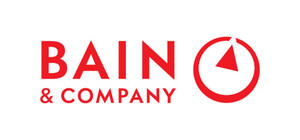Realizing this potential will require reaching emerging customer groups, including the estimated 250 million Generation Y and Z customers with annual incomes over $100,000 by 2030
BOSTON, July 11, 2022 /PRNewswire/ -- Bain & Company released today a new study on the wealth management market, predicting customer demand for wealth management services to surge to more than $500 billion by 2030—double the size of the market in 2021. The study shows that wealth management, with capital efficiency and recurring revenue streams, has the potential to help any parent company double market capitalization. However, realizing this potential has become more difficult due to emerging customers with different priorities, requiring new delivery models, new offerings and new economic models.
Targeting Generation Y and Z customers
Demographic shifts and the expansion of wealth globally are creating new customer segments. An estimated 250 million Generation Y and Z customers—those born between 1981 and 2012—will have an annual income of over $100,000 by 2030.
Bain & Company projects a $90 trillion increase in liquid assets from all investors globally, from 2021 to 2030, with $40 trillion coming from individuals who have assets between $100,000 and $1 million. The Americas and Asia-Pacific will lead the charge.
"New younger customers are more self-directed and self-educated," said Markus Habbel, a partner at Bain & Company and leader of the firm's wealth and asset management work. "While overall these emerging customers want digital delivery, for their most difficult decisions they want human interaction, requiring a high-touch hybrid approach."
Catering to differing priorities for products and offerings
As emerging segments grow, so too do their different priorities, including:
- ESG. 75% of wealthy millennials consider environmental, social and governance (ESG) to be an important factor in investment decisions. Bain & Company projects that ESG-related assets will compose about 46% of all assets under management by 2030, up from 33% today.
- Private markets. The rapid growth and outperformance of private markets relative to public markets has whetted investors' appetites, spurring several wealthtech companies to broaden access to private equity and debit.
- Digital assets. The market cap of public companies issuing cryptocurrency reached $2.2 trillion before sliding back to $1.3 trillion as of mid-May. Many advisors expect to invest between 1% and 5% of clients' portfolios in digital assets over the next five years.
- Retirement solutions. With baby boomers retiring amid the ongoing shift from defined benefit to defined contribution plans, investors are looking for innovative decumulation solutions to maintain a comfortable standard of living.
Scaling new high-tech, high-touch delivery models
If wealth managers hope to generate outsized growth in the future, they will need to create a more approachable value proposition for younger investors with fewer liquid assets than older generations. This will require creating a delivery model that actively leverages digital tools and channels and reserves human interactions for critical or complicated episodes, allowing companies to increase the ratio of clients per advisor to around 300. A similar trend of broadening brand appeal and reach revived the luxury goods industry.
These currents will continue to drive greater returns at scale. Bain & Company's study estimates that returns to scale are about 35% higher with a digitally intensive model relative to traditional models. To attain the competitive advantage of greater scale, many firms will turn to mergers and acquisitions.
Tapping into emerging business models
Wealth management firms that come out ahead in this new world will consider one of three emerging business models:
- Integrated platform provider. Large firms with distinctive capabilities and expertise, the ability to build standout products and insights, and access to high-quality investment opportunities will have an edge. They should seek to expand to affluent customers by democratizing their offerings through digital tools and channels that offer a better experience.
- Customer acquisition specialist. This model relies on access to customers through highly productive advisor forces or adjacent business lines. One distinctive feature of this model is holistic advice for customers.
- Specialist provider. This business model provides a value proposition tailored to a clearly defined customer segment. While smaller in scale, it stands out by applying the right advice and offerings to customers who will not be well served by larger, broad-based competitors.
Editor's Note: To arrange an interview, contact Katie Ware at [email protected] or +1 646 562 8102.
About Bain & Company
Bain & Company is a global consultancy that helps the world's most ambitious change makers define the future.
Across 65 cities in 40 countries, we work alongside our clients as one team with a shared ambition to achieve extraordinary results, outperform the competition, and redefine industries. We complement our tailored, integrated expertise with a vibrant ecosystem of digital innovators to deliver better, faster, and more enduring outcomes. Our 10-year commitment to invest more than $1 billion in pro bono services brings our talent, expertise, and insight to organizations tackling today's urgent challenges in education, racial equity, social justice, economic development, and the environment. We earned a gold rating from EcoVadis, the leading platform for environmental, social, and ethical performance ratings for global supply chains, putting us in the top 2% of all companies. Since our founding in 1973, we have measured our success by the success of our clients, and we proudly maintain the highest level of client advocacy in the industry.
SOURCE Bain & Company

WANT YOUR COMPANY'S NEWS FEATURED ON PRNEWSWIRE.COM?
Newsrooms &
Influencers
Digital Media
Outlets
Journalists
Opted In




Share this article